The question of whether chickens can eat mushrooms is both common and crucial for backyard chicken keepers. While chickens are omnivores that enjoy varied diets, not all mushrooms are safe for poultry consumption. The answer is nuanced: chickens can safely eat certain store-bought and homegrown edible mushrooms, but many wild varieties can be toxic or even fatal to birds.
Safe mushrooms for chickens include common store-bought varieties like button mushrooms, cremini, portobello, shiitake, and oyster mushrooms when properly prepared and fed in moderation. However, wild mushrooms should always be avoided due to identification challenges and toxicity risks. Additionally, mushrooms should only comprise a small portion of a chicken's diet—no more than 10% of their total food intake—and should always be cooked to improve digestibility and eliminate potential harmful compounds.

Understanding Chicken Nutrition and Dietary Needs
Basic Chicken Dietary Requirements
Primary nutritional needs:
-
Protein: 16-20% for laying hens, 20-24% for growing birds
-
Carbohydrates: Energy source from grains and vegetables
-
Fats: 3-5% of total diet for essential fatty acids
-
Vitamins and minerals: Calcium, phosphorus, vitamins A, D, E, and B-complex
-
Clean water: Constant access to fresh, clean water
Natural feeding behaviors: Chickens are omnivorous foragers that naturally consume seeds, insects, worms, small animals, and plant matter. In the wild, they may encounter mushrooms while foraging, but their natural instincts help them avoid toxic varieties.
How Mushrooms Fit Into Chicken Diets
Nutritional benefits of safe mushrooms:
-
Protein content: 2-4g per 100g in most varieties
-
B vitamins: Essential for energy metabolism and nervous system health
-
Minerals: Potassium, selenium, and phosphorus
-
Low calories: Help provide variety without excessive energy
-
Fiber: Supports digestive health in moderation
Comparison to commercial feed: Whileedible mushrooms offer nutritional benefits, they cannot replace balanced commercial chicken feed, which is specifically formulated to meet all poultry nutritional requirements.
Safe Mushroom Varieties for Chickens
Store-Bought Mushrooms (Generally Safe)
Button mushrooms (Agaricus bisporus):
-
Safety level: Safe when cooked
-
Preparation: Remove stems, chop into small pieces
-
Serving size: Small portions as treats
-
Benefits: Good protein source, easy to digest when cooked
Cremini and Portobello mushrooms:
-
Safety level: Safe when cooked (same species as button mushrooms)
-
Preparation: Remove gills from portobello, chop appropriately
-
Serving guidelines: Moderate portions due to larger size
-
Advantages: Familiar to chickens, widely available
Shiitake mushrooms:
-
Safety level: Safe when thoroughly cooked
-
Important note: Must never be fed raw due to potential digestive issues
-
Preparation: Remove tough stems, cook completely, chop finely
-
Benefits: High in B vitamins and protein
Oyster mushrooms:
-
Safety level: Generally safe when cooked
-
Varieties: Pearl, golden, and king oyster mushrooms
-
Preparation: Cook thoroughly, remove tough stems
-
Feeding notes: Start with small amounts to test tolerance
Homegrown Mushrooms from Controlled Systems
Advantages of homegrown mushrooms: Growing your own mushrooms with a Lykyn Smart Mushroom Grow Kit provides several benefits for chicken feeding:
-
Known varieties: Guaranteed safe species identification
-
Controlled growing conditions: No wild contaminants or toxins
-
Fresh harvest: Maximum nutritional value
-
Chemical-free: No pesticides or unknown treatments
Recommended homegrown varieties for chickens:
-
Oyster mushrooms: Fast-growing, easy to identify, generally safe
-
Shiitake: High nutritional value when properly prepared
-
Lion's Mane: Safe when cooked, offers unique texture
Quality control benefits: The Lykyn Smart Mushroom Grow Chamber ensures optimal growing conditions, producing clean, safe mushrooms without the identification risks associated with wild foraging.
Mushrooms to Avoid Completely
Wild mushrooms (Never feed):
-
Death cap mushrooms: Extremely toxic, often fatal
-
Destroying angel mushrooms: Highly poisonous
-
False morels: Can cause serious illness
-
Unknown species: Risk of misidentification too high
Why wild mushrooms are dangerous:
-
Positive identification requires expert knowledge
-
Many toxic species resemble edible varieties
-
Toxins can be concentrated and more dangerous to birds
-
Risk far outweighs any potential benefits
Moldy or spoiled mushrooms:
-
Can contain mycotoxins harmful to chickens
-
May cause digestive upset or poisoning
-
Always use fresh, quality mushrooms only
Proper Preparation and Feeding Guidelines
Preparation Methods for Chicken Safety
Cooking requirements:
-
Always cook mushrooms before feeding to chickens
-
No seasoning: Avoid salt, garlic, onions, or spices
-
Plain preparation: Steam, boil, or sauté without additives
-
Complete cooking: Ensure mushrooms are thoroughly heated
-
Cool completely: Allow to reach room temperature before serving
Chopping and sizing:
-
Small pieces: Chop into bite-sized portions appropriate for chicken size
-
Remove tough parts: Eliminate stems that may be difficult to digest
-
Uniform sizes: Ensure pieces are manageable for all birds in flock
Feeding Guidelines and Portions
Frequency recommendations:
-
Occasional treats: 1-2 times per week maximum
-
Small portions: No more than 10% of total daily food intake
-
Individual servings: 1-2 tablespoons per full-sized bird
-
Monitor response: Watch for any digestive issues
Introduction protocol:
-
Start small: Begin with tiny amounts to test tolerance
-
Observe behavior: Watch for 24-48 hours after first feeding
-
Gradual increase: Slowly increase portion size if well-tolerated
-
Maintain variety: Rotate with other safe treats
Age and Health Considerations
Age-appropriate feeding:
-
Adult birds: Fully developed digestive systems can handle mushrooms better
-
Young chicks: Avoid mushrooms until at least 8-10 weeks old
-
Pullets: Introduce gradually as part of treat rotation
-
Senior birds: May benefit from softer, well-cooked preparations
Health status considerations:
-
Healthy birds: Can tolerate mushrooms as occasional treats
-
Sick or stressed birds: Avoid new foods during illness
-
Molting birds: Focus on high-protein feeds during feather regrowth
-
Broody hens: May have reduced appetite for treats
Nutritional Benefits and Risks
Potential Benefits for Chickens
Nutritional advantages:
-
Protein supplementation: Adds amino acids to diet
-
Vitamin B complex: Supports energy metabolism and nervous system
-
Mineral content: Provides selenium, potassium, and phosphorus
-
Digestive variety: Encourages natural foraging behaviors
-
Low calorie treats: Provides satisfaction without excessive energy
Behavioral benefits:
-
Mental stimulation: Searching and pecking at treats provides enrichment
-
Natural behaviors: Mimics wild foraging experiences
-
Flock dynamics: Shared treats can reduce boredom and pecking
-
Seasonal variety: Offers dietary diversity throughout the year
Potential Risks and Concerns
Digestive issues:
-
Raw mushrooms: Can be difficult to digest and may cause upset
-
Overconsumption: Large amounts can displace balanced nutrition
-
Individual sensitivity: Some birds may be more sensitive than others
-
Sudden changes: Rapid dietary changes can cause digestive stress
Nutritional imbalances:
-
Calcium displacement: Too many treats can reduce calcium intake
-
Protein imbalance: May affect laying performance if overdone
-
Vitamin interactions: Excessive treats can affect vitamin absorption
-
Energy balance: High-moisture treats may reduce feed intake
Signs to Watch For
Positive responses:
-
Normal eating behavior: Continued interest in regular feed
-
Healthy droppings: Normal color and consistency
-
Active behavior: Maintained energy levels and activity
-
Good laying: Continued egg production in laying hens
Warning signs:
-
Digestive upset: Watery or abnormal droppings
-
Reduced appetite: Decreased interest in regular feed
-
Lethargy: Unusual inactivity or depression
-
Respiratory issues: Difficulty breathing (stop mushrooms immediately)
Integration with Backyard Chicken Systems
Mushroom Growing for Chicken Keepers
Benefits of integrated systems:
-
Dual purpose: Mushrooms for human consumption and chicken treats
-
Sustainable practice: Use chicken manure as substrate component
-
Cost effective: Reduce feed costs with homegrown supplements
-
Educational opportunity: Learn about fungi while improving flock nutrition
Recommended setup: The Lykyn Smart Mushroom Grow Kit is ideal for chicken keepers because:
-
Controlled environment: Eliminates wild mushroom risks
-
Consistent production: Regular harvests for both family and flock
-
Quality assurance: Known safe varieties
-
Easy management: Automated systems reduce time investment
Seasonal Feeding Strategies
Spring feeding:
-
Fresh growth: Introduce mushrooms as birds begin laying
-
Gradual transition: Start after winter stress period
-
Breeding season: Ensure balanced nutrition during reproductive period
Summer considerations:
-
Heat stress: Provide treats during cooler parts of day
-
Fresh alternatives: Use fresh mushrooms when possible
-
Hydration support: Mushrooms provide moisture during hot weather
Fall preparation:
-
Molting support: Reduce treats during heavy molting
-
Winter prep: Build body condition before cold weather
-
Harvest season: Take advantage of fresh mushroom availability
Winter feeding:
-
Comfort foods: Warm, cooked mushrooms can be appreciated
-
Nutrition focus: Maintain high-quality feed as primary nutrition
-
Indoor growing: Perfect time for controlled mushroom cultivation
Alternatives and Complementary Treats
Other Safe Treats for Chickens
Vegetable alternatives:
-
Leafy greens: Spinach, kale, lettuce in moderation
-
Root vegetables: Carrots, sweet potatoes, beets
-
Squash family: Pumpkin, zucchini, winter squash
-
Berries: Blueberries, strawberries, raspberries
Protein-rich treats:
-
Mealworms: High protein, natural food source
-
Crickets: Excellent protein and entertainment
-
Cooked eggs: Scrambled or hard-boiled (remove shells)
-
Plain yogurt: Probiotics and protein in small amounts
Creating Balanced Treat Programs
Rotation schedule:
-
Monday: Leafy greens
-
Wednesday: Mushrooms (when offered)
-
Friday: Protein treats (mealworms, etc.)
-
Sunday: Seasonal fruits or vegetables
Portion control:
-
10% rule: All treats combined should not exceed 10% of total diet
-
Individual needs: Adjust based on bird size and flock dynamics
-
Seasonal adjustments: Modify treats based on weather and laying cycles
Safety Protocols and Emergency Procedures
Prevention Strategies
Source verification:
-
Purchase from reputable suppliers: Known mushroom vendors
-
Avoid wild collection: Never feed foraged mushrooms
-
Check expiration dates: Use fresh mushrooms only
-
Inspect for mold: Discard any questionable specimens
Feeding protocols:
-
One new food at a time: Allow 3-5 days between new introductions
-
Small test groups: Try with 1-2 birds before feeding entire flock
-
Document responses: Keep records of what treats work well
-
Consistent preparation: Use same cooking methods each time
Emergency Response
Signs of mushroom poisoning:
-
Immediate symptoms: Vomiting, diarrhea, lethargy
-
Progressive symptoms: Difficulty breathing, weakness, collapse
-
Neurological signs: Uncoordinated movement, tremors
-
Severe cases: Complete loss of appetite, inability to stand
Emergency actions:
-
Remove all mushrooms: Stop feeding immediately
-
Provide fresh water: Ensure access to clean water
-
Separate affected birds: Isolate symptomatic chickens
-
Contact veterinarian: Seek professional help immediately
-
Document everything: Note symptoms, timing, and mushroom type
Working with Veterinarians
When to call:
-
Any severe symptoms: Don't wait if birds show serious illness
-
Multiple affected birds: Suggests feed contamination
-
Unusual behaviors: Changes in eating, drinking, or activity
-
Emergency situations: Respiratory distress or collapse
Information to provide:
-
Mushroom type: Exact variety and source
-
Quantity fed: How much and how often
-
Preparation method: Raw or cooked, any additives
-
Timeline: When fed and when symptoms appeared
-
Flock details: Number of birds affected, ages, general health
Economic and Practical Considerations
Cost-Benefit Analysis
Costs of mushroom treats:
-
Store-bought mushrooms: $2-5 per pound depending on variety
-
Growing equipment: Initial investment in growing systems
-
Time investment: Preparation and feeding time
-
Veterinary costs: Potential costs if problems arise
Benefits:
-
Flock health: Variety in diet may improve overall health
-
Egg quality: Happy hens may lay better quality eggs
-
Entertainment value: Provides enrichment and reduces boredom
-
Educational: Learning opportunity for family members
Practical Implementation
Time management:
-
Batch preparation: Cook larger amounts and portion out
-
Scheduled feeding: Integrate into regular care routines
-
Seasonal planning: Coordinate with mushroom availability
-
Record keeping: Track what works best for your flock
Storage considerations:
-
Fresh mushrooms: Use within 2-3 days of cooking
-
Refrigerated storage: Keep cooked mushrooms properly stored
-
Portion control: Pre-portion treats for easy feeding
-
Waste reduction: Only prepare what will be consumed
Frequently Asked Questions
Q: Can chickens eat raw mushrooms from the grocery store? A: No, chickens should not eat raw mushrooms. Even safe varieties like button mushrooms should always be cooked before feeding to chickens. Raw mushrooms can be difficult to digest and may contain compounds that are neutralized by cooking.
Q: What should I do if my chicken ate a wild mushroom? A: Remove any remaining mushrooms immediately and monitor the bird closely for symptoms like vomiting, diarrhea, lethargy, or difficulty breathing. Contact a veterinarian immediately if you notice any symptoms, as wild mushroom poisoning can be fatal and requires prompt treatment.
Q: How often can I give my chickens mushrooms as treats? A: Mushrooms should be offered only occasionally—no more than 1-2 times per week and in small portions. Remember that all treats combined should not exceed 10% of a chicken's total daily food intake to maintain proper nutrition.
Q: Can baby chicks eat mushrooms? A: No, baby chicks should not be given mushrooms or other treats until they are at least 8-10 weeks old. Young chicks need specialized starter feed to support their rapid growth and development.
Q: Are mushrooms grown in a Lykyn Smart Mushroom Grow Kit safe for chickens? A: Yes, mushrooms grown in controlled systems like the Lykyn Smart Mushroom Grow Kit are much safer than wild varieties because you know exactly what species you're growing. However, they should still be cooked before feeding and given only as occasional treats in proper portions.
Summary
Chickens can safely eat certain store-bought and homegrown mushrooms when properly prepared and fed in moderation. Safe varieties include button, cremini, portobello, shiitake, and oyster mushrooms, but they must always be cooked and never comprise more than 10% of the bird's diet. Wild mushrooms should never be fed to chickens due to identification risks and potential toxicity.
Ready to provide the safest mushroom treats for your flock? The Lykyn Smart Mushroom Grow Kit offers the perfect solution for growing known-safe mushroom varieties that can benefit both your family and your chickens. With automated environmental controls and guaranteed species identification, you can confidently grow oyster mushrooms, shiitake, and other safe varieties without the risks associated with wild foraging. Start growing your own safe, fresh mushrooms today and give your chickens the occasional healthy treat they'll love while maintaining complete control over what goes into their diet.

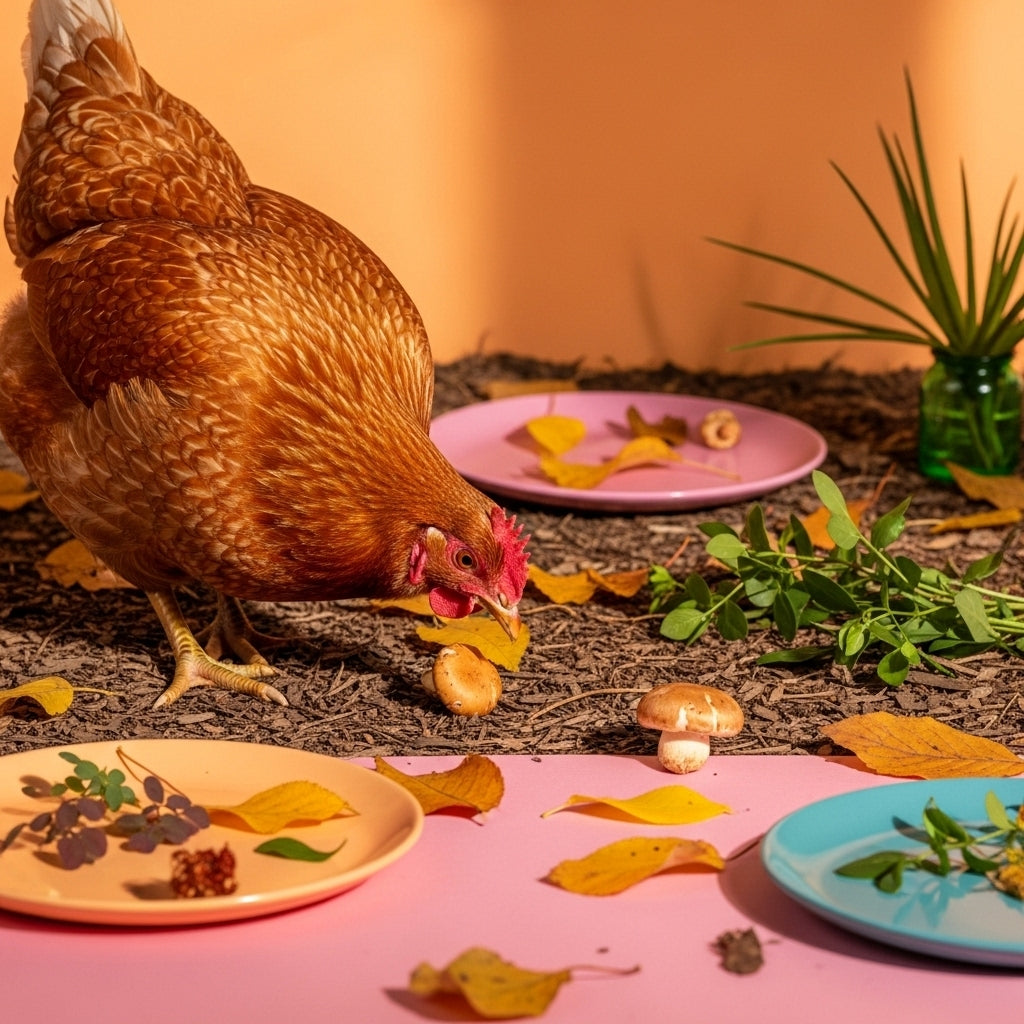
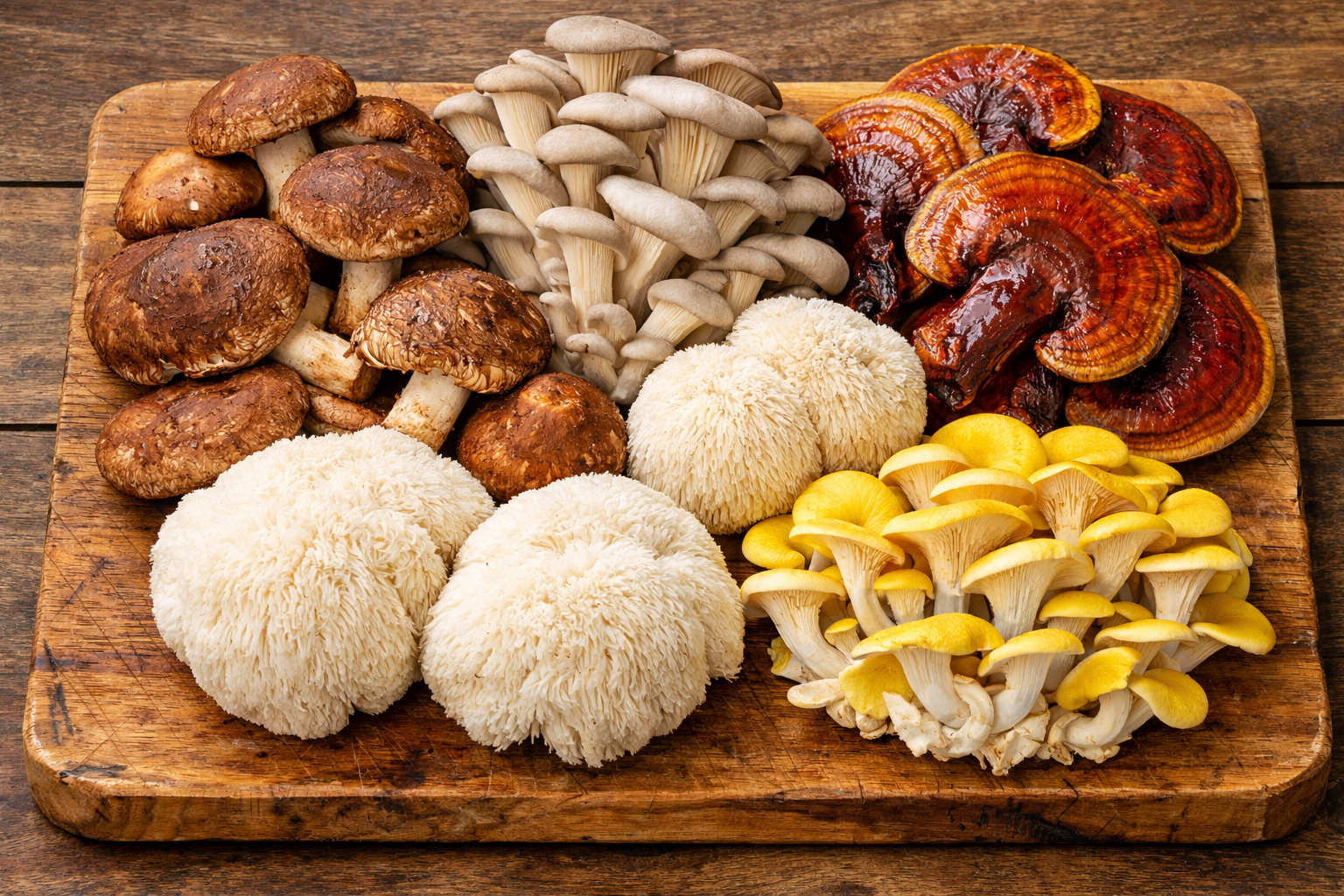


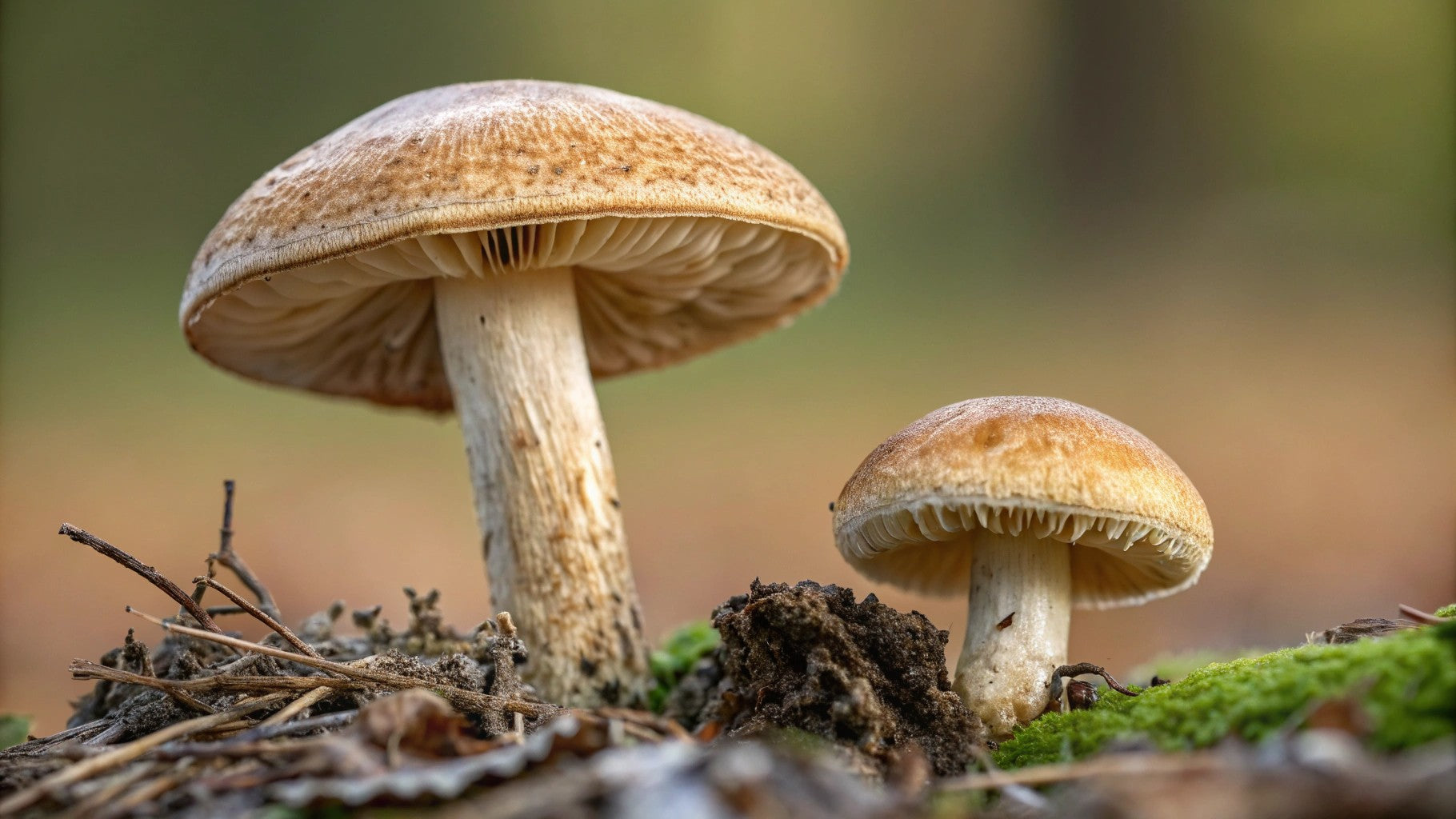
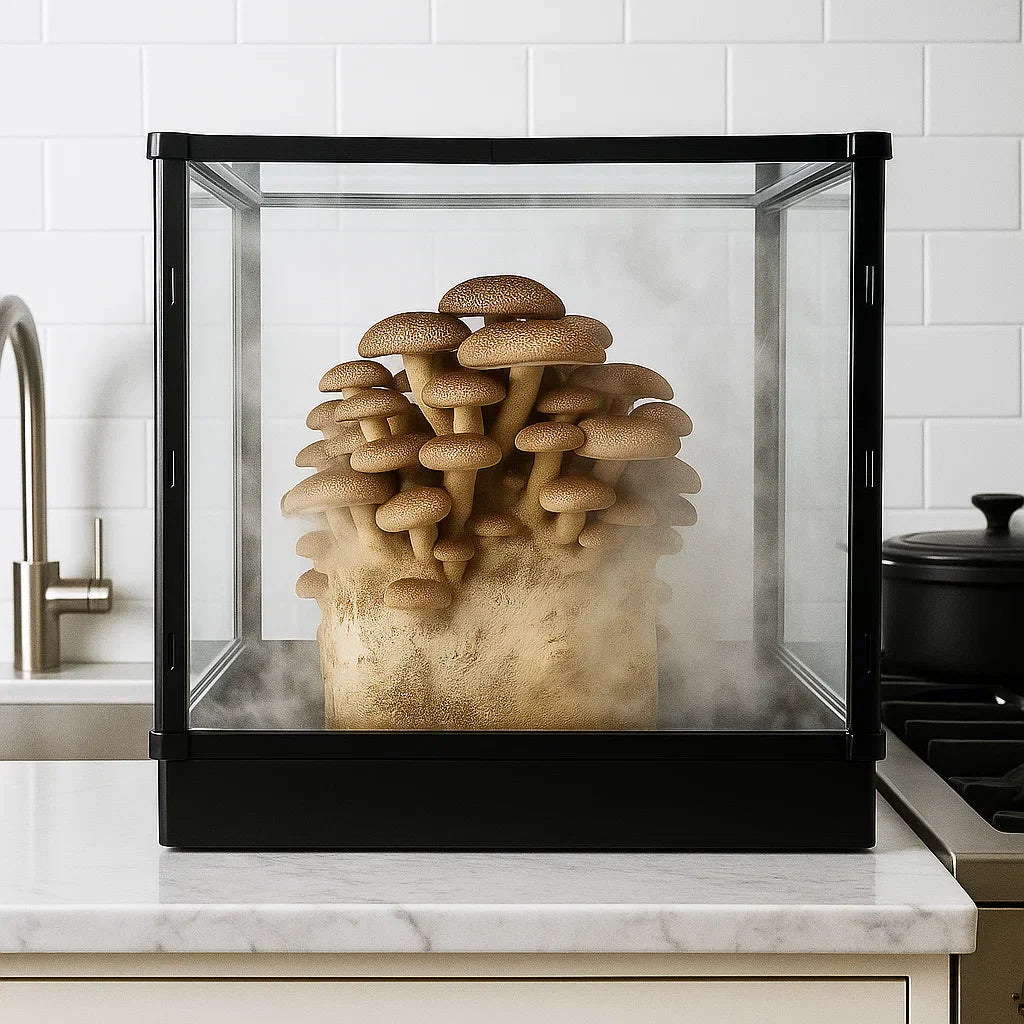
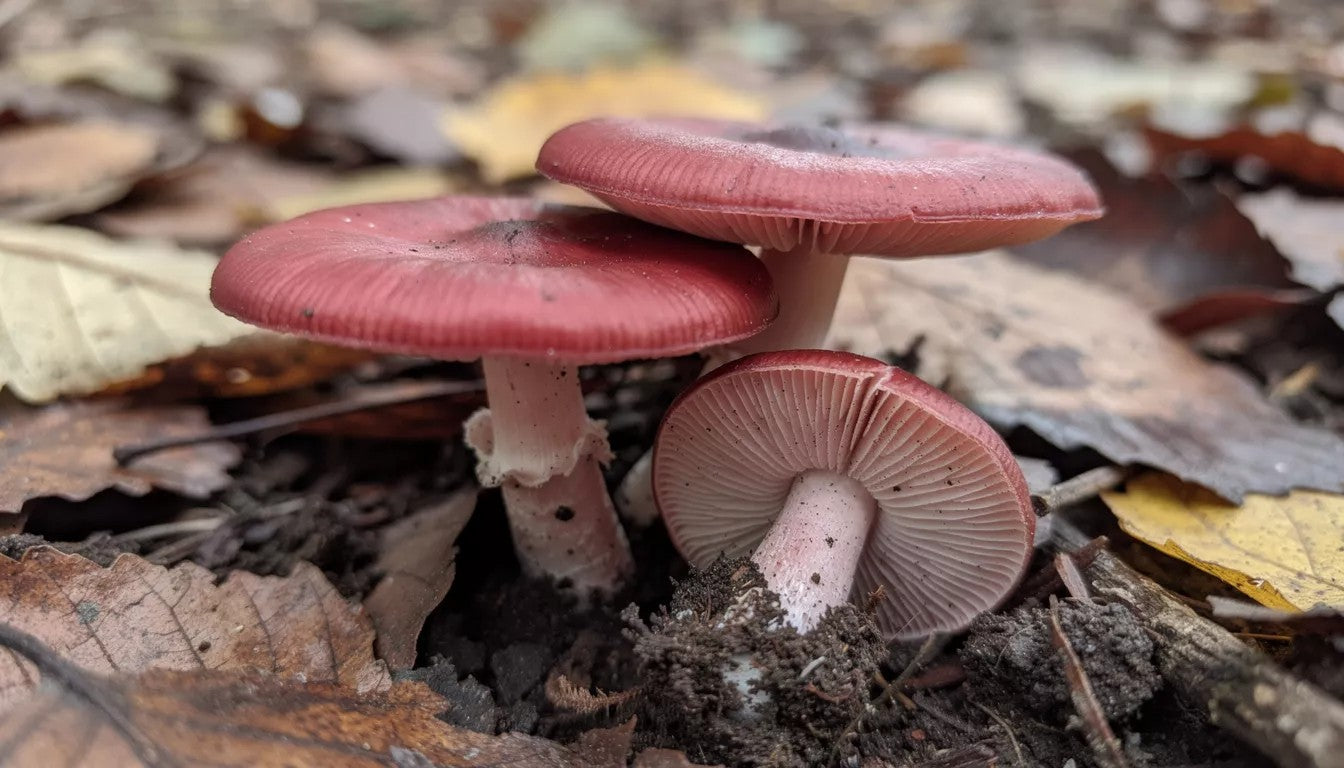
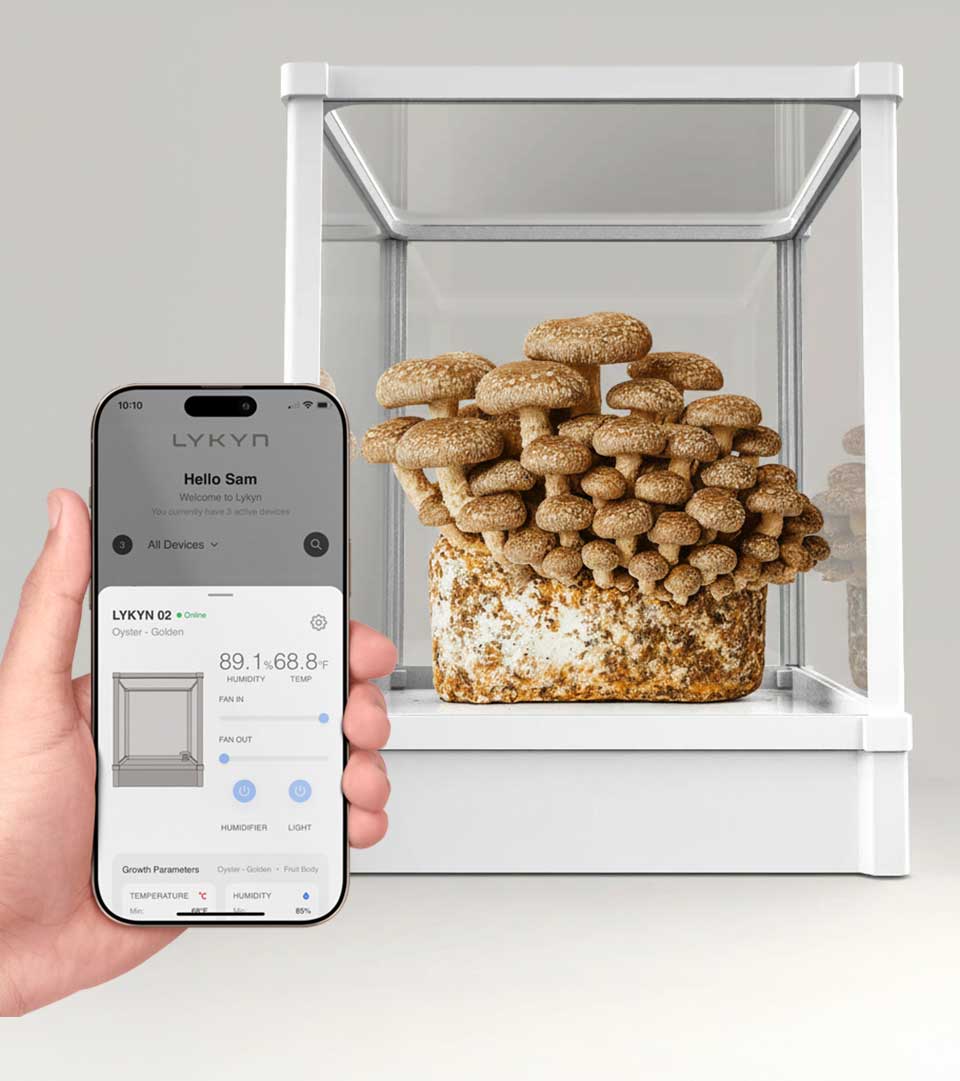





Share:
How to Clean Mushrooms: The Complete Guide to Preparing Fresh Fungi
How Long Do Mushrooms Last in Fridge: Your Complete Storage Guide